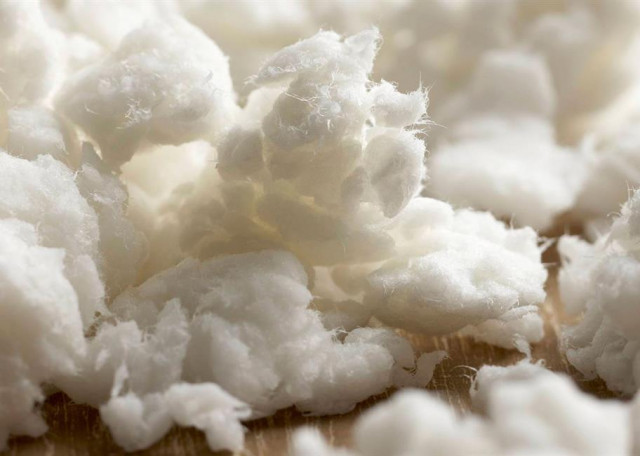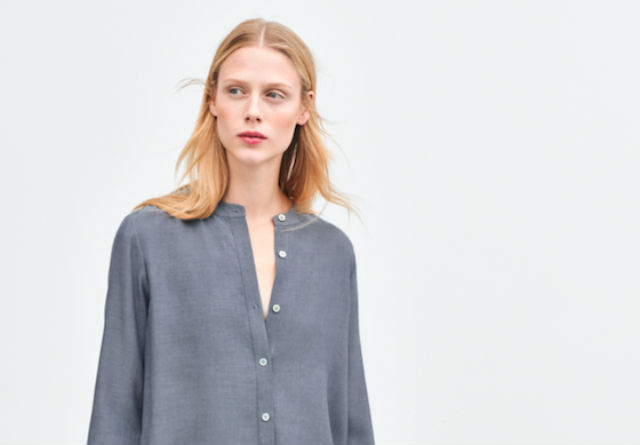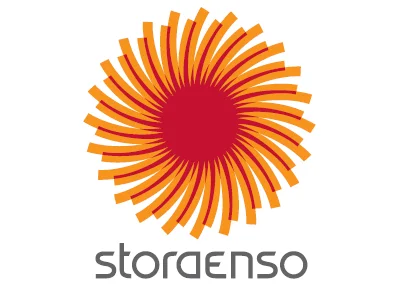This Nordic company wants you to wear trousers made from trees
You might be surprised by how renewable materials are helping the fashion industry turn over a new leaf.

Sustainability is a way of life in the Nordics, where everything from hand soap to hotel rooms is labelled eco-friendly. And one Nordic company is going even further in its efforts to shape a better tomorrow.
Once a traditional paper and board company, 800-year-old Stora Enso is now a leading provider of renewable materials. In layman’s terms, that means materials made from sustainable resources instead of materials based on fossil fuels.
“Trees are a renewable raw material. Whenever we harvest trees we plant new ones, promoting a sustainable material that grows year after year,” says Sirpa Välimaa, who manages product development at Stora Enso.
In 2012, the company expanded its portfolio with a new product made from trees that can be used to make textiles.
LEARN MORE: Moving from wood to fashion
Known as dissolving pulp, this new raw material is used to create what's known as regenerated cellulosic fibres. And despite the admittedly unstylish name, those fibres can actually be spun into yarn and then woven or knitted into fabrics used to create an array of stylish products.
Indeed, one such fabric -- viscose -- is a silky material similar to cotton that already accounts for around 7 percent of all the world’s textiles.
Much like cotton, viscose is soft, breathable, and comfortable to wear, meaning that fashion brands around the world are increasingly using it in their collections.
 A close up look at cellulosic fibres derived from wood pulp before they are woven into fabric. Photo: Stora Enso
A close up look at cellulosic fibres derived from wood pulp before they are woven into fabric. Photo: Stora Enso
Scandinavian clothing brand Filippa K is one such company Stora Enso has partnered with to tackle “fast fashion”.
The two companies set out to shift the Scandinavian clothing brand’s business away from the fast fashion cycle typically associated with pushing new designs to market as quickly and cheaply as possible.
“We want to be part of the solution, rather than adding to the problem,” says Elin Larsson, Sustainability Director at Filippa K.
A more “circular economy” aims to promote greater reuse, recycling, and refurbishment of materials, which in turn helps to reduce waste and give consumers maximum value from their purchases.
CLICK TO LISTEN: Renewable future: Fashion from a tree
Larsson explains that in order for Filippa K to adopt this circular economy, the brand needed to switch out the old and search for the new.
“Going forward we need to have a diverse palette of fibres with a mix of materials other than the ones we are using today, but that serve their purpose just as well.”

Many Filippa K designs, such as the shirt pictured above, are made with wood-based fabrics tencel or viscose. Photo: Filippa K
And that’s where renewable materials developed by Stora Enso came into play.
Unlike cotton, which requires huge amounts of water and pesticides to be farmed -- a single pair of jeans alone requires 3625 litres of water – the birch trees from which the dissolving pulp is made require much less water to grow.
For example, the 11,700 litres of water required to make just 1 kg of cotton fabric would produce over 26 kg of wood-based viscose.
Roxana Barbieru, Director Business Development Regenerated Cellulose and MFC at Stora Enso explains that there is growing demand for sustainable textiles by global brand owners, and Stora Enso is committed to providing them with high-quality and renewable raw materials.
“Renewability is important as wood-based textiles can solve many of the challenges the textile industry is facing today.”
While consumers have grown used to paying less to fill their wardrobes, these cheaper garments don’t last and often end up in landfills. It’s been estimated that as much as 95 percent of clothes discarded with domestic waste could be re-worn, reused, or recycled.
Throughout the cooperation, which concluded in 2016, Filippa K supported Stora Enso’s pursuit to promote dissolving pulp as a renewable raw material in the textile industry.
Larsson adds that working together, Filippa K and Stora Enso were part of the ongoing mission to find a solution to “fast fashion” waste and create a more sustainable model for the fashion industry in the future.
“The collaboration with Stora Enso was about showcasing the different steps, from raw material to ready clothes, and to demonstrate that the whole supply chain can be sustainable,” Larsson adds.
Transparency in the fashion supply chain is of growing importance to consumers who are becoming more concerned about the provenance of the materials used to make the products they buy.
READ MORE: How trees are transformed into fabric
“Consumers want to know the origin of their textiles,” says Välimaa. “They want to know who produced them and in what circumstances and whether the chain is sustainable.”
Barbieru agrees, adding that all Stora Enso’s wood is 100 percent traceable to its forest of origin and that the company makes every effort to ensure that more trees are grown than harvested.
“Every piece of clothing carries a story with it. How it was made, what it’s made of, and how many resources were used to make it. Wouldn’t you want to know that story?”
This article was produced by The Local Client Studio and sponsored by Stora Enso.
This content was paid for by an advertiser and produced by The Local's Creative Studio.

Join the conversation in our comments section below. Share your own views and experience and if you have a question or suggestion for our journalists then email us at [email protected].
Please keep comments civil, constructive and on topic – and make sure to read our terms of use before getting involved.
Please log in here to leave a comment.